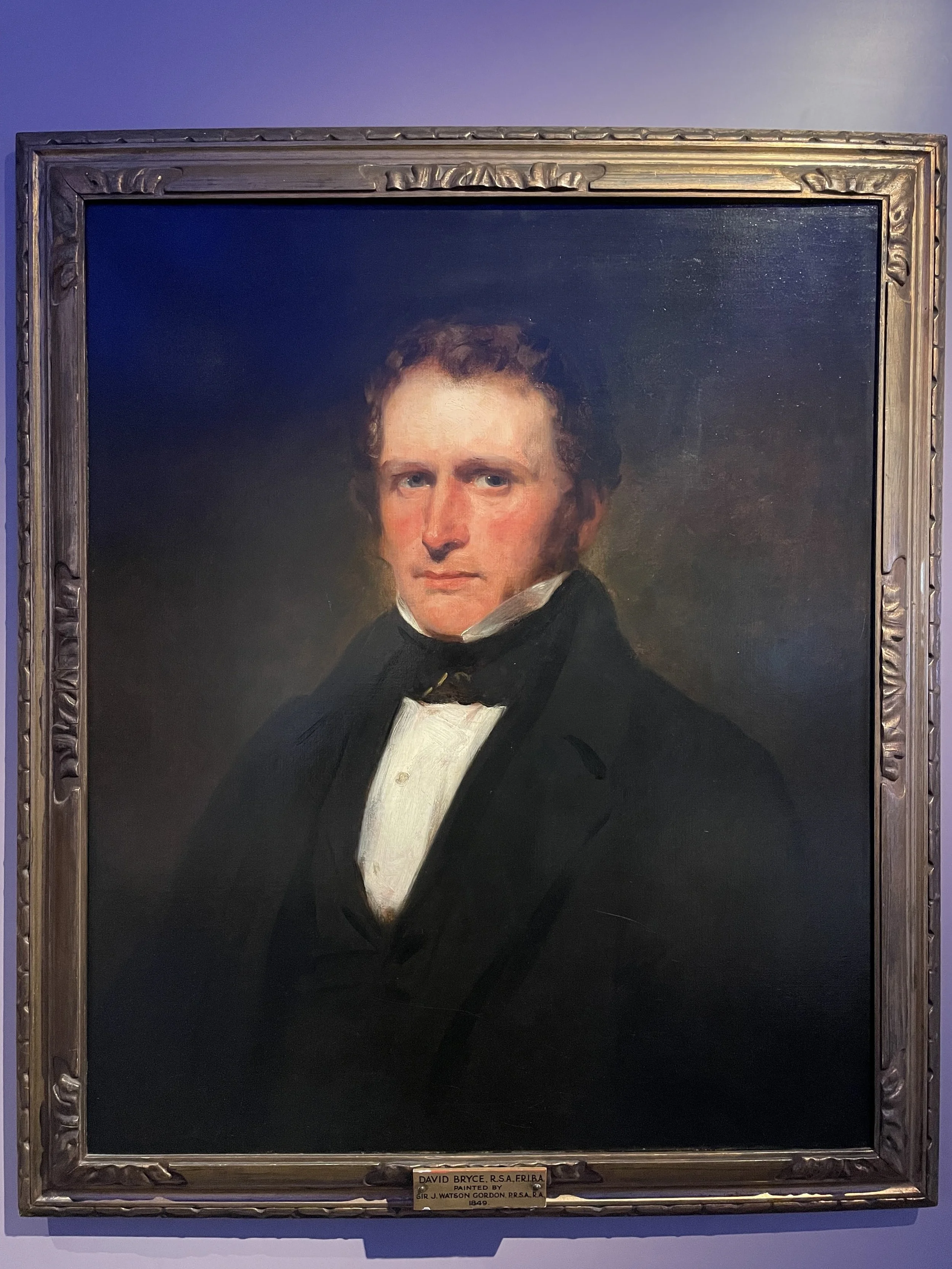Architecture of Edinburgh - The Style and Function of David Bryce
David Bryce was born on South College Street in Edinburgh's Old Town in 1803, and would go on to leave his mark on the city in a variety of structures that combine iconic 19th century style with practicality and function - so much so that many of his developments remain in use.
You're likely to have been inside a David Bryce building in Edinburgh today and not even known it!
Bryce studied under the architect William Burn, and later became his business partner (and co-holder with him of the Grand Architect post at the top of Scottish freemasonry). Their working relationship dissolved following a design dispute in 1845, after which Burn moved to London, leaving Bryce to contribute to Edinburgh's Old and New Towns alone.
One of his earliest surviving projects in Edinburgh can be found on George Street in the New Town, where he designed the Caledonian Insurance Company offices - today the building is the George Intercontinental hotel.
Although the building looks outwardly unremarkable, it was typical of the 1840s style that combined elegance and simplicity, reflecting a little of the Georgian-era elements that the original buildings of George Street would have exuded.
More typical of the later Scots Baronial style, when Victorian decorative detail began to take prominence in buildings across Edinburgh, is his design for the British Linen Bank, which today is another hotel on nearby St Andrew Square.
These grand temples of finance were intended to create an impressive visual effect, and even today this former bank building has a style and a level of detail that intrigues passers-by - as with most buildings in Edinburgh you need to look up from street level to fully appreciate its impact!
In 1848 Bryce supervised the demolition and removal of Trinity College Church, a 15th century church building which had stood in the village of Calton, and which was being removed in order to accommodate the development of Waverley railway station.
Memorably (as I often describe on my tours) the church was never rebuilt quite as had been promised to the people of Calton - what remains of it can still be found nearby...
In 1853 Bryce built the Surgical Hospital at the site of what had been Edinburgh's first hospital, on Infirmary Street in the Old Town. Today this site is owned and occupied by the University of Edinburgh, and Bryce's building remains as a campus structure.
Not all of Bryce's buildings have survived - having built the Freemasons' Hall on George Street, the building would later be replaced with a more modern structure, for example, and several other Bryce developments in the city would fall to either the Victorian improvements or the 20th century wrecking ball.
One significant structure which has survived is Bryce's redevelopment of the Bank of Scotland headquarters at the top of the Mound.
The bank had taken offices here in 1806, when it was still under the governance of Henry Dundas, but in the 1860s David Bryce was commissioned to redesign the building in which the bank was based. He created the very distinctive Baroque style of the building which stands today, visible from Princes Street and with its decorative dome topped by the figure representing the goddess Nike, symbolising victory, created by John Rhind.
Visitors can still explore Bryce's bank building today, as the basement has been turned into the Museum on the Mound, telling the history of banking and finance in Scotland.
Another of his bank designs, again on George Street in the New Town, is today the Standing Order pub.
Two of Bryce's later designs remain iconic and highly visible in the city today.
To the north-west of the New Town stands Fettes College, one of the city's private schools, which dominates the skyline of the area with its tall spire which combines Scots Baronial detail with a French chateau style.
Noted for its academic reputation, Fettes has educated generations of Scots, including actor Tilda Swinton, former Prime Minister Tony Blair, and (in fiction) James Bond...
Back in the Old Town, probably the largest of Bryce's designs was the 1870s Royal Infirmary building, which operated as Edinburgh's main hospital from the late 19th century up until 2005, when it was sold for redevelopment.
The site has been undergoing a significant transformation into contemporary housing and office space, known as Quartermile, and today combines glass and steel modern structures with Bryce's decorative stone towers and wings of the original hospital.
One of the best places from which to see the combination of new and old is from the Meadows, the large parkland onto which the site backs.
Bryce died in Edinburgh on 7 May 1876, never living to see his Royal Infirmary project completed. He was buried in the New Calton burial ground, where his grave faces Arthur's Seat and overlooks the Palace of Holyroodhouse at the bottom end of the Royal Mile.
Among the pantheon of Edinburgh's grand designers, David Bryce is one whose work continues to impact visitors today.








